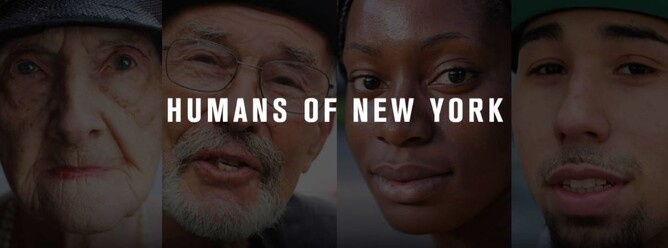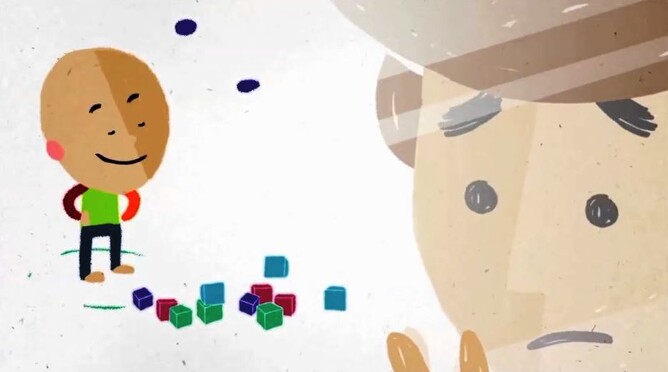Do you want to connect better with your audiences amid the blizzard of content that's out there? Use HEROES to help you to do that:
by George Hulbert, with help from another great image from Unsplash.com
In an era when every Tom, Dick and Harry seems to be selling off-the-shelf content and content marketing plans, blizzards of samey #content overwhelm me whenever I turn on my phone or computer.
When I finally fight the tide, pick myself back up off the floor, get back onto my chair and turn off the content tap, I often reflect that one thing people forget is the most important thing:
Is your audience interested in what you are putting out?
Do they see themselves in the problems you outline, the solutions you bring to bear, and the benefits you generate? Do they fit into the world you are creating, do the stories you tell mirror their own lives, and do they understand what they need to do as a result of absorbing your content?
All too often it seems to me that somewhere in the bowels of companies there is a giant red button with the word 'PUSH' emblazoned in neon letters. Every morning, some lucky person gets to walk up to it and press it – and the missiles of content start to fly once more.
Lucky us.
Pull, not push
When I work with organisations to help them become relevant to their audiences, it often amazes me how few of them spend enough time thinking about what their audiences need and the content / information they would like to PULL from them – and told in a meaningful way that engages them.
When creating your communication / engagement plans, it is worth remembering that alongside tricky click-thru attractions we need to weave in stories that start first of all with the audiences seeing themselves - WIIFM: what's in it for me? You don't have to be monochrome and only tell stories of people, but your strategy should take a tapestry approach that includes this crucial element.
This has led me to set up a simple content and storytelling structure that relies on telling GREAT audience-centred stories – based first and foremost on creating the stories that your audiences a) want to read because they are great stories, and b) that they need to experience to understand how they will personally benefit from the helpful and beneficial organisation that you no doubt are.
And, much as I hate acronyms, it's all based on a principle I am calling HEROES:
H - Human faces
When I finally fight the tide, pick myself back up off the floor, get back onto my chair and turn off the content tap, I often reflect that one thing people forget is the most important thing:
Is your audience interested in what you are putting out?
Do they see themselves in the problems you outline, the solutions you bring to bear, and the benefits you generate? Do they fit into the world you are creating, do the stories you tell mirror their own lives, and do they understand what they need to do as a result of absorbing your content?
All too often it seems to me that somewhere in the bowels of companies there is a giant red button with the word 'PUSH' emblazoned in neon letters. Every morning, some lucky person gets to walk up to it and press it – and the missiles of content start to fly once more.
Lucky us.
Pull, not push
When I work with organisations to help them become relevant to their audiences, it often amazes me how few of them spend enough time thinking about what their audiences need and the content / information they would like to PULL from them – and told in a meaningful way that engages them.
When creating your communication / engagement plans, it is worth remembering that alongside tricky click-thru attractions we need to weave in stories that start first of all with the audiences seeing themselves - WIIFM: what's in it for me? You don't have to be monochrome and only tell stories of people, but your strategy should take a tapestry approach that includes this crucial element.
This has led me to set up a simple content and storytelling structure that relies on telling GREAT audience-centred stories – based first and foremost on creating the stories that your audiences a) want to read because they are great stories, and b) that they need to experience to understand how they will personally benefit from the helpful and beneficial organisation that you no doubt are.
And, much as I hate acronyms, it's all based on a principle I am calling HEROES:
H - Human faces
At The Clarity Business, we are massive fans of the Humans Of New York blog and Facebook page. With a mere 18 million likes on Facebook, we are clearly not alone.
What do we like so much about it? Human-centred, visual, people-generated stories of lives, worries, achievements, fears, successes, failures, and so much more. Told at a human level - with face-to-face imagery to match - the personal perspective is a powerful, highly engaging thing: it is easy to get lost in the blog as you go from one story to the next, one person to the next, and one life to the next.
Originally set up as a photography project, HONY has exploded into a massive community of people seeking out stories and getting a huge amount from them.
My lesson: people want to pull stories from you about people they can identify with or learn from. Be human, be interesting, relevant, be useful.
E - Emotion
Scientist, TED Talk and prolific author Paul Zak is fascinating on the topic of emotion in storytelling.
What do we like so much about it? Human-centred, visual, people-generated stories of lives, worries, achievements, fears, successes, failures, and so much more. Told at a human level - with face-to-face imagery to match - the personal perspective is a powerful, highly engaging thing: it is easy to get lost in the blog as you go from one story to the next, one person to the next, and one life to the next.
Originally set up as a photography project, HONY has exploded into a massive community of people seeking out stories and getting a huge amount from them.
My lesson: people want to pull stories from you about people they can identify with or learn from. Be human, be interesting, relevant, be useful.
E - Emotion
Scientist, TED Talk and prolific author Paul Zak is fascinating on the topic of emotion in storytelling.
Check out a nice YouTube feature he has created - The Future of Storytelling – that describes the physical changes that occur inside a person when they are taken on an emotional storytelling journey, and then how this process makes them do things they might not have otherwise done, such as give money – or more money.
Emotion is a powerful thing. We shouldn't leave it at home when we set off for work. The best stories, as Paul Zak details, run through a specific emotional arc that has a potent effect on the person they are being told to. So try to tell stories that take people on an emotional journey.
A client of mine - an infrastructure company - once did this to great effect, although following a slightly different arc. This company worked out that it was about dig up a street that contained a kindergarten. Imagining the deluge of safety risks, complaints, anger and problems that would occur if it just went and dug up the street - the old-school, traditional approach - instead they took a step forward and approached the kindergarten to see how they might work together around the construction and use it as an opportunity to teach the kids about safety.
By involving the children, showing them the site, dressing them up in safety gear, creating a walking bus around the site and interacting with their parents and the kindergarten on more than one occasion, everyone came out ahead – and it created many great opportunities for my client to tell stories about its good work - and for local people to do so too - all in a way that mattered to people.
My client then won an award for its customer-centric behaviour - a major feather in its cap - before winning a significant multi-year contract based in part on its approach to working safely and in a caring manner with people.
R = Realness
Authenticity is key. Make it real. What real stories can you access from your own database of the work you do, the difference you make and the benefits you generate? How can you show your customers that you live in their world?
I'll bet that you won't have to look hard to find stories of - and from - your customers of their experiences with you – good and bad.
Ask yourself and your colleagues, in this order: what are the most common problems our customers experience? How have our products, services and people helped people solve their problems? And what opportunities have we got coming up that give us a real chance for our customers to explain - and record – what we did and why we are great?
Then, if you can get out and into the real world occupied by your desired audiences to visually tell these stories (not in a poorly-lit office) you can build a new level of engagement.
And don't be too afraid of the bad. If you can address situations where things have gone wrong, it gives you renewed opportunities to be genuine in your communication – as long as you have moved the dial.
O = Outcomes
For me, the best messages and stories all start with achievement: how did you move your customer from A to B – and did they enjoy the experience of getting there?
It is far less interesting - and less useful - to tell stories that effectively say 'we do stuff'. Instead, find ways and opportunities to show how you achieved things for people.
I try to think of what I call 'the barbeque conversation'. Imagine: you're standing around the barbeque, sipping a beer and watching someone turn perfectly good sausages into lumps of coal, when someone asks the dreaded question: "What do you do?"
Instead of saying 'I am an accountant/lawyer/hairdresser' etc - which says "I do stuff" and allows everyone to nod and then go back to starting at the blackening sausages - think about how you might say 'I help people to save $xxx in tax/protect human rights/make you look amazing' etc (as long as it is true!).
The idea is that by showing the outcome instead of the process, you naturally prompt the follow-up question: 'how do you do that?' which then allows you to begin a conversation that was started by the other person. They are pulling the information from you.
A good piece of content should do the same thing, as it should make the viewer want more from you – they are pulling the information from you. And they start the whole experience by finding out how you will be the active agent in helping them to move forward.
E = Examples
Find examples. Find examples. Find examples. No one tells your stories better than other people. 'Nuff said.
S = Stories
Someone clever once said 'every tweet is a story idea'. I like that maxim: it may not be universally true, but it does make you think about how stories can come from the smallest places.
The trick is to try to be deliberate: in your weekly team meetings, when you are reviewing work done, planning your next steps and thinking about operational day-to day stuff, put an agenda item in that says something like 'PR' or 'stories' to ensure that everyone stops and asks themselves 'what have we got coming up that would demonstrate the way we do things?' or 'who are we likely to see next week/month who might be prepared to tell a story of how we helped them'?
And one last thing: don't forget the all-important call to action. Tell people what you want them to do!
Be heroes: tell the stories that matter – and succeed.
Emotion is a powerful thing. We shouldn't leave it at home when we set off for work. The best stories, as Paul Zak details, run through a specific emotional arc that has a potent effect on the person they are being told to. So try to tell stories that take people on an emotional journey.
A client of mine - an infrastructure company - once did this to great effect, although following a slightly different arc. This company worked out that it was about dig up a street that contained a kindergarten. Imagining the deluge of safety risks, complaints, anger and problems that would occur if it just went and dug up the street - the old-school, traditional approach - instead they took a step forward and approached the kindergarten to see how they might work together around the construction and use it as an opportunity to teach the kids about safety.
By involving the children, showing them the site, dressing them up in safety gear, creating a walking bus around the site and interacting with their parents and the kindergarten on more than one occasion, everyone came out ahead – and it created many great opportunities for my client to tell stories about its good work - and for local people to do so too - all in a way that mattered to people.
My client then won an award for its customer-centric behaviour - a major feather in its cap - before winning a significant multi-year contract based in part on its approach to working safely and in a caring manner with people.
R = Realness
Authenticity is key. Make it real. What real stories can you access from your own database of the work you do, the difference you make and the benefits you generate? How can you show your customers that you live in their world?
I'll bet that you won't have to look hard to find stories of - and from - your customers of their experiences with you – good and bad.
Ask yourself and your colleagues, in this order: what are the most common problems our customers experience? How have our products, services and people helped people solve their problems? And what opportunities have we got coming up that give us a real chance for our customers to explain - and record – what we did and why we are great?
Then, if you can get out and into the real world occupied by your desired audiences to visually tell these stories (not in a poorly-lit office) you can build a new level of engagement.
And don't be too afraid of the bad. If you can address situations where things have gone wrong, it gives you renewed opportunities to be genuine in your communication – as long as you have moved the dial.
O = Outcomes
For me, the best messages and stories all start with achievement: how did you move your customer from A to B – and did they enjoy the experience of getting there?
It is far less interesting - and less useful - to tell stories that effectively say 'we do stuff'. Instead, find ways and opportunities to show how you achieved things for people.
I try to think of what I call 'the barbeque conversation'. Imagine: you're standing around the barbeque, sipping a beer and watching someone turn perfectly good sausages into lumps of coal, when someone asks the dreaded question: "What do you do?"
Instead of saying 'I am an accountant/lawyer/hairdresser' etc - which says "I do stuff" and allows everyone to nod and then go back to starting at the blackening sausages - think about how you might say 'I help people to save $xxx in tax/protect human rights/make you look amazing' etc (as long as it is true!).
The idea is that by showing the outcome instead of the process, you naturally prompt the follow-up question: 'how do you do that?' which then allows you to begin a conversation that was started by the other person. They are pulling the information from you.
A good piece of content should do the same thing, as it should make the viewer want more from you – they are pulling the information from you. And they start the whole experience by finding out how you will be the active agent in helping them to move forward.
E = Examples
Find examples. Find examples. Find examples. No one tells your stories better than other people. 'Nuff said.
S = Stories
Someone clever once said 'every tweet is a story idea'. I like that maxim: it may not be universally true, but it does make you think about how stories can come from the smallest places.
The trick is to try to be deliberate: in your weekly team meetings, when you are reviewing work done, planning your next steps and thinking about operational day-to day stuff, put an agenda item in that says something like 'PR' or 'stories' to ensure that everyone stops and asks themselves 'what have we got coming up that would demonstrate the way we do things?' or 'who are we likely to see next week/month who might be prepared to tell a story of how we helped them'?
And one last thing: don't forget the all-important call to action. Tell people what you want them to do!
Be heroes: tell the stories that matter – and succeed.



